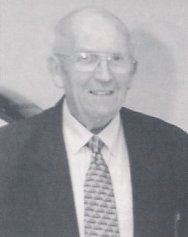
Call Sign's theme of looking back at Dial-a-Cab's early days during our 50th anniversary year continues with taxi historian Phil Warren going back to 1956... I had worked as a gardener in a tiny Oxfordshire village
where the family had ended up after being bombed out of two homes during the
blitz in 1940/1. In June 1944, I volunteered for the army and served in the
Middle East until demobbed in April 1948. I then went back to my original
job as a gardener working for the London County Council. The pay was poor
and my father, who had been a taxi driver since 1927, said I should do the
Knowledge and become a taxi driver... On the Radio |
1956 and all that -
|
|
|
until March, when the Ideal Home Exhibition opened its doors - although the
Smithfield Show at Olympia just before Xmas helped us out. But from the very
beginning I drove a radio cab, an Austin petrol-driven FX3 on ODRTS, which
was on the corner of Pentonville Road and Afleck Street. It was from there
at around 7pm one evening that I accepted a radio job from Grays Inn Road to
Waterloo station. On setting down, I was approached by a porter who asked me
if I would take a passenger to Southampton. I needed no second asking and I
was soon on my way - my first of many 'readers'. My passenger was head chef
on the SS United States, then a famous transatlantic passenger liner.
Setting down at Southampton, I was well paid, had a good 'wash and brush up'
and treated to a fabulous meal. I was a converted radio man from the very start and I well remember the sterling work of the staff in those far-off days. There was John Robinson, a cab driver and dedicated radio man. It was said that when despatching one busy evening, he could not get the job covered. His own cab was parked outside in Afleck Street, so he covered the job and then came back to carry on despatching! I had accepted the offer of an old-timer, a Mr Brown who was nicknamed Father Christmas because of his long flowing white beard. The story was that he had been a WW1 flying ace. He certainly liked his drink and because of this could not get an insurance company to cover his cab. The de facto owner was George Steadman, manager of the Royal British Legion Taxi Drivers Training School and it was he who induced me to drive this petrol Austin FX3 taxi. My call signs on ODRTS were B33, A8 and later, from the start of the Welbeck Motors minicab scandal, it was A1. By then I was working nights and the dispatcher, whose name I'm almost ashamed to say I've forgotten, was most probably the best radio dispatcher ever on any London radio circuit. Those were the days of the 'Pissed-till-Dawn' club, where a certain band of ODRTS night drivers could get a drink for themselves or for a thirsty passenger at any time between midnight and 5.30am. It was no 'drum' I can assure you, but a good first-class hotel not a million miles from Rochester Row police station! Trains, Boats, Planes and Changes... |
provided a huge amount of work, mostly at Waterloo Station serving trains
from Southampton's Atlantic route, St Pancras for boats docking in
Liverpool, Fenchurch St for passengers from Tilbury - though some of these trains terminated at St Pancras and Victoria Station where the Continental side of the station catered for those passengers. The trains were served by huge numbers of taxis ranking. In the case of Victoria, it went as far down as Lupus Street! Waterloo was supplied by cabs ranking in the 'rat's hole' - the name given to the taxi rank under the station from its entry point in York Road to where it exited inside the station itself and now used again by Dial-a-Cab for Eurostar trips. Massive amounts of luggage were catered for. Many FX3's had roof racks and these virtually commanded their own price, especially at Waterloo where employees of the Savoy Hotel would wave £1 notes around like confetti to hire two cabs, one for passengers one for their luggage. Gradually this work changed as air travel increased. British European Airways' first terminal was a converted shop in Kensington High Street. As air travel grew, it moved to York Road, Waterloo and from there on to Cromwell Road, where a temporary terminal was erected on the site of the building which stands there today. British Overseas Air Terminal - 'BOAC' - opposite Victoria coach station catered for long haul passengers. The amount of work for cabs from all these terminals was colossal, yet such is the way of things that it has not affected the taxi trade in London because passengers use huge numbers of taxis at Heathrow, Victoria where they arrive from Gatwick on special express trains and the City Airport catering for passengers from European cities. I know that many taxi drivers in London will not agree with me, but I am certain that the one cohesive force which binds the London licensed taxi trade, is the superb two-way radio system, unbelievably modern compared to the days when a 'man on a bike at Waterloo' was a reference to a PCO inspector waiting to pounce on unsuspecting drivers! Radio, its vehicles, the Knowledge and a strict but fair method of licensing control, has made the London licensed taxi trade, beyond any shadow of a doubt, the most superb, excellent and honest taxi service the world has ever seen. Phil Warren Editor's note: Phil Warren currently has an excellent book out called The History of the Knowledge of London. Available from London Publishing Company, £9.95... |
|